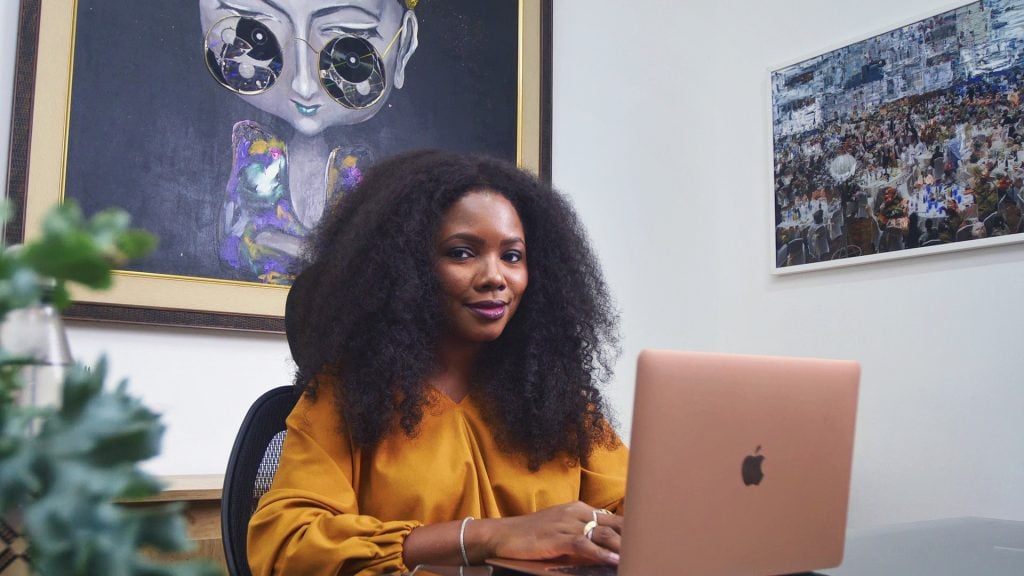February 1977—an oil boom and economic development has boosted the naira’s value to approximately equal the dollar. Nigeria is perfectly poised to host the Second World Black and African Festival of Arts and Culture, Festac ‘77, the largest cultural event on the continent, complete with performances from Stevie Wonder and Sun Ra and a host of plays, dance performances, films, and art exhibitions spread over the course of two weeks.
Fifty-five years later, following decades of bad governance and economic instability, the art world’s gaze has finally returned to the world’s most populous Black nation. In tandem with the rise of the markets of some Ghanaian artists (see: Amoako Boafo, Ibrahim Mahama), the international art market is turning its focus to Nigeria, another West African country with a rich cultural history and a host of artistic talent.
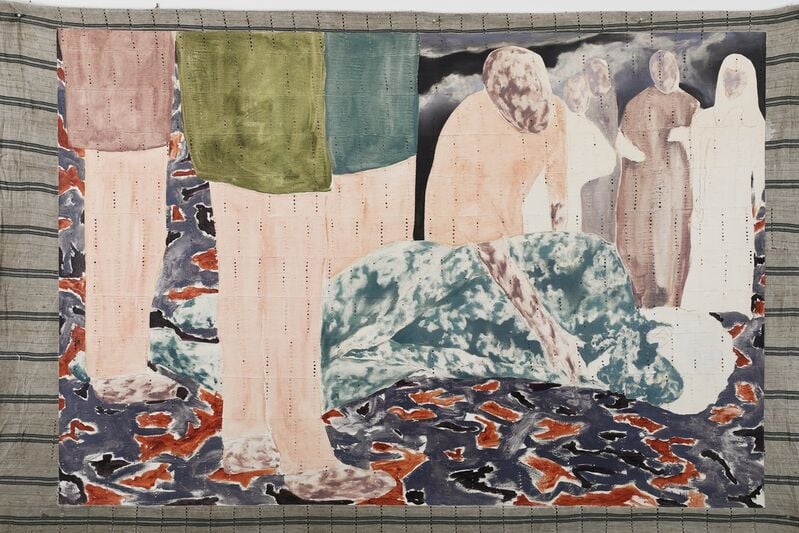
Nengi Omuku, Night Watch (2021). Image courtesy of the artist.
The result can be seen in heated competition at auction: a 2019 painting by artist Marcellina Akpojotor sold at Phillips last September for $47,880, some six times its upper estimate, and in November, a work by Wahab Saheed also shattered expectations at Phillips, selling for $81,900, more than ten times its high estimate.
The Nigerian art scene has been steadily growing for more than a decade, notably since the late curator Bisi Silva opened the Center for Contemporary Art in Lagos in 2007. That same year, art collector Kavita Chellaram launched Nigeria’s first auction house, Arthouse Contemporary, and numerous gallery openings followed. In 2015, Okwui Enwezor became the first Nigerian and African curator of the Venice Biennale, and in 2016, the country’s first art fair, ART X Lagos, was founded.
The following year, Lagos got its own biennial, adding another dimension to the city’s burgeoning art ecosystem. But with a lack of state support for the non-commercial aspects of the industry (even the biennial is privately funded), the rise of the art market and the development of a culture of collecting has become central to the health of the wider sector.
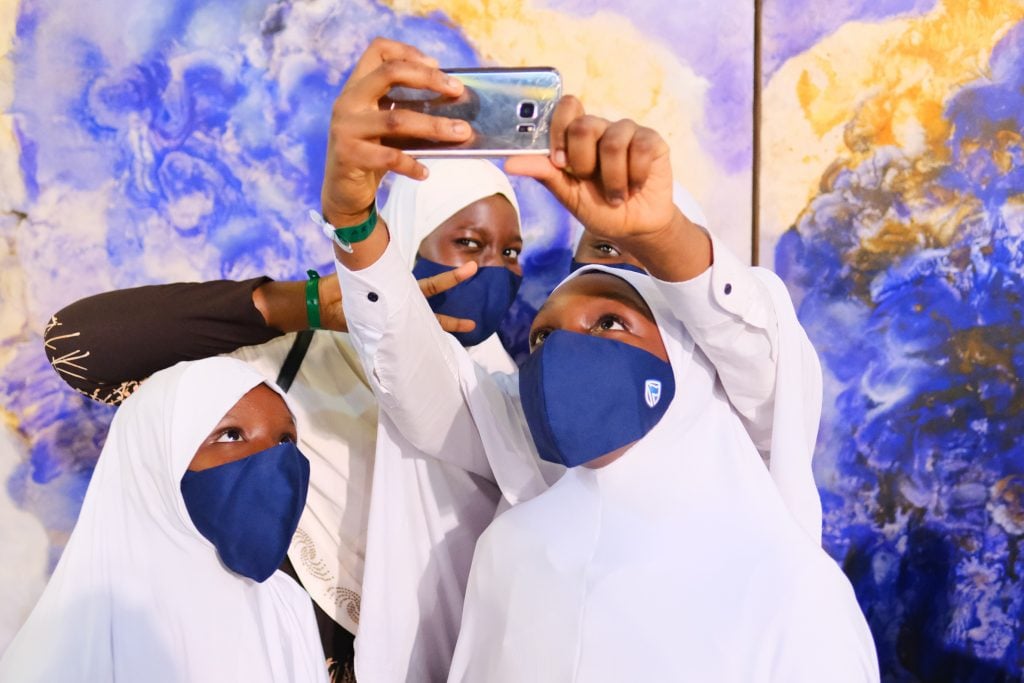
Guests interacting with art at Galerie MAM booth. Courtesy ART X Lagos.
“Our umbrella motivation was to contribute to restoring the visual arts back to their rightful place in the national consciousness in Nigeria,” said Tokini Peterside of her decision to found ART X Lagos.
Encouraging Homegrown Collectors
Independent financial advisor and collector Olufemi Akinsanya has been collecting for almost five decades across traditional, modern, and contemporary art. His 1,000-strong collection includes work by Yinka Shonibare, Ben Enwonwu, Peju Alatise, and Victor Ehikhamenor.
“I decided to focus on collecting Nigerian artworks in particular,” Akinsanya told Artnet News. “A lot of works of Nigerian provenance, from the beginning of time, were collected by expatriates, and many of those objects were going abroad.”
But homegrown collectors aren’t as active as some artists would hope. Photographer Lakin Ogunbanwo said that most of his collectors still come from abroad. “I believe ‘seasoned’ collectors in Nigeria struggle to accept photography as art,” he explained. “It’s in the same way that some people now may struggle to attach value to NFTs or even understand the concept of collecting digital art.”
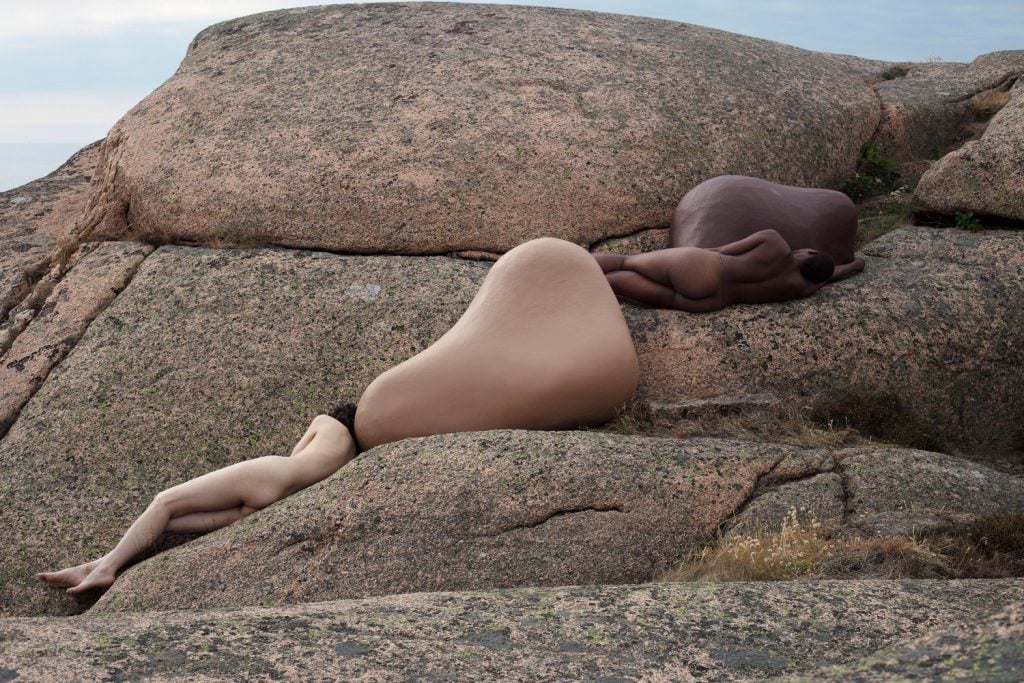
Lakin Ogunbanwo, Notion of Form (2018). Image courtesy of the artist.
Amid a boom in demand for young art stars from Africa, many younger artists are capitalizing on the digital sphere to market their work internationally. “I was very deliberate about being active on my art page,” multidisciplinary artist Deborah Segun said. “A lot of people discovered my works through social media.” The strategy led to a highly successful 2021 for Segun, who showed during Frieze Los Angeles, New York, and London, sold out her booth at 1:54 London, and mounted a solo show with Beers London.
Still, the promise of local recognition has paid off for others. Artist Nengi Omuku experienced first-hand the support of this new crop of collectors, a few years after repatriating to Nigeria upon graduating from the Slade in London. In the space of just a year, a handful of people had bought everything from her studio. “It gave me the financial standing and space to be able to begin the process of making, without the deadlines,” she said. “I had liberty to create and explore at my own pace.”
Beyond acquisitions, Omuku mentioned a cohort of anonymous collectors who send struggling artists stipends on a monthly basis. “Those aren’t even just collectors,” she said, “those are more like art patrons.”

Deborah Segun, Restless Thoughts (2021). Courtesy of the artist.
Ensuring Sustainable Practices
Senegalese photographer Djibril Drame recalled that when he first showed in Lagos in 2021, his work received a much warmer reception than it did in Dakar; all sales came from Nigerian collectors.
Yet some players are mindful of the industry getting ahead of itself.
“Even the name collector should be redefined, as it should come with some responsibilities, just like everyone else in the ecosystem,” said Ugoma Ebilah, founder of Bloom Art gallery in Lagos. “To just be able to part with money for objects you love cannot be enough.”
Ebilah is invested in cultivating collectors who can also lend support to galleries, art schools, and other parts of the wider scene. Bloom’s gallery programming includes private “salons” to educate collectors about sustainable and responsible practices.
“I’ve been very vocal about differentiating between art buyers and collectors, because they are not the same thing, and most people are buyers,” Ebilah said. “The buyers are demanding, even though they may not always have the information, because social media is very shiny and bright. A lot of the guidance they’re getting can often be shallow and quick, and is a bit reactionary—but I think this will pass.”
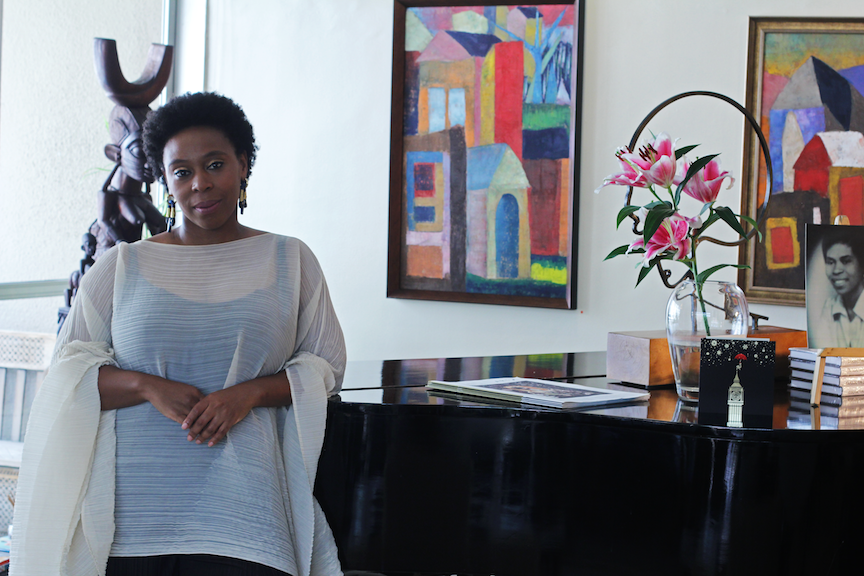
Ugoma Ebilah, collector and founder of Bloom Art Lagos.
The term “patron” appears to be the buzzword of the moment. “Nigeria has a long history of art patronage,” noted collector Femi Akinsanya. “There are a few famous carvers who lived in court, like the Olowe-of-Ise, who was probably the most famous Yoruba carver.” Akinsanya has made a point of digitizing his collection for the sake of cultural preservation. “I have acquired a happy burden, to preserve these things, and pass them onto future generations,” he said.
Patrons like Akinsanya, Kavita Chelleram, and Prince Yemisi Shyllon—who founded Nigeria’s largest museum in 2019, to which he donated over 1,000 works from his private collection—have been key actors in nurturing and maturing Nigeria’s art ecosystem.
Caution and Optimism
Looking ahead, with the value of the naira at its lowest in history and a pivotal presidential election coming up in 2023, there is a balance of caution and optimism about the future. While short-term financial gains can be a tempting prospect to young artists, many believe it is important for creators to place their work carefully if they hope to avoid market speculators, see their work enter institutions, and ensure the longevity of their market.
“The artist needs to focus on their work, and not be too commercially minded,” Akinsanya said. “We’ve seen this problem before, in the mid ’70s, with new age banks collecting art. You saw a massive production of art, and every bank had a collection, but where are those banks now? Where are those collections?” In 1983, Nigeria went into a recession, which many of banks did not survive; their collections were sold off at bargain-basement prices.
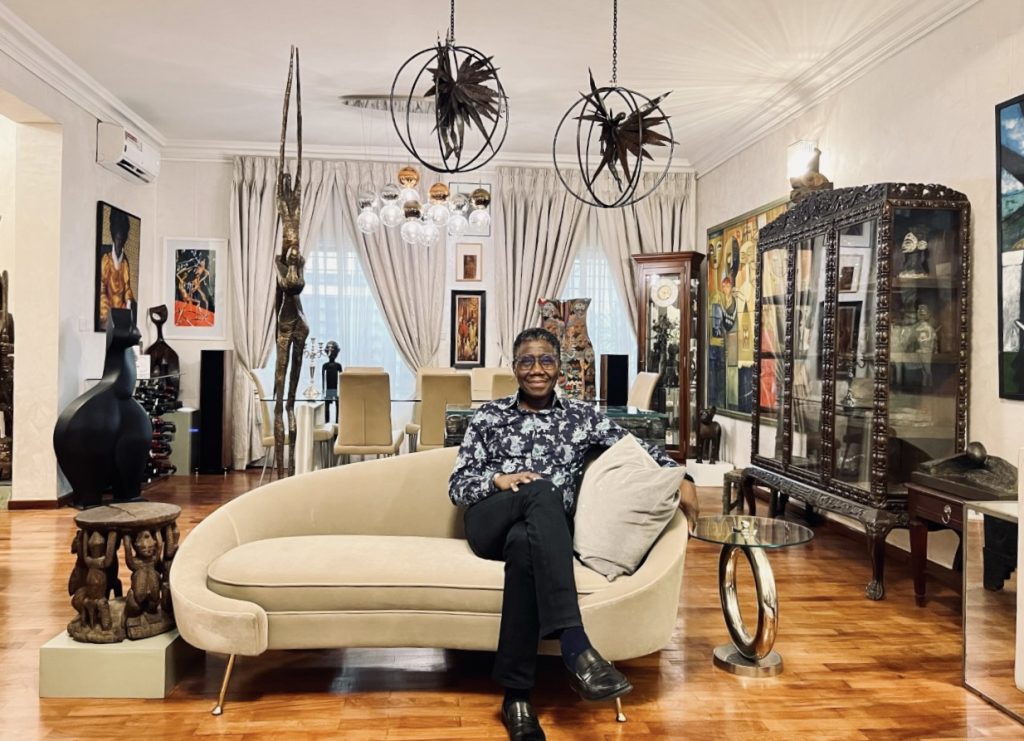
Olufemi Akinsanya, collector and financial advisor.
Omuku also noted the risk of art flippers manipulating the market for Nigerian artists. “When patrons are able to acquire work at a small amount, it can go south when greed steps in, which can involve flipping works [and] scatter[ing] the whole trajectory of the artist’s natural projection,” he said. “I don’t think it has happened so much in Nigeria, but it has happened in other parts of west Africa.”
ARTX Lagos founder Tokini Peterside says collective planning will keep the sector on the right track. “What I would like to see is some of the key players coming together, to dialogue and set an agenda for the growth of the sector in the long term, and identify what additional pillars are needed to build and sustain the work that is happening here.”
Whether the rebirth can be sustained remains to be seen, but one thing is certain: patrons will have a hugely determining hand in the outcome.
